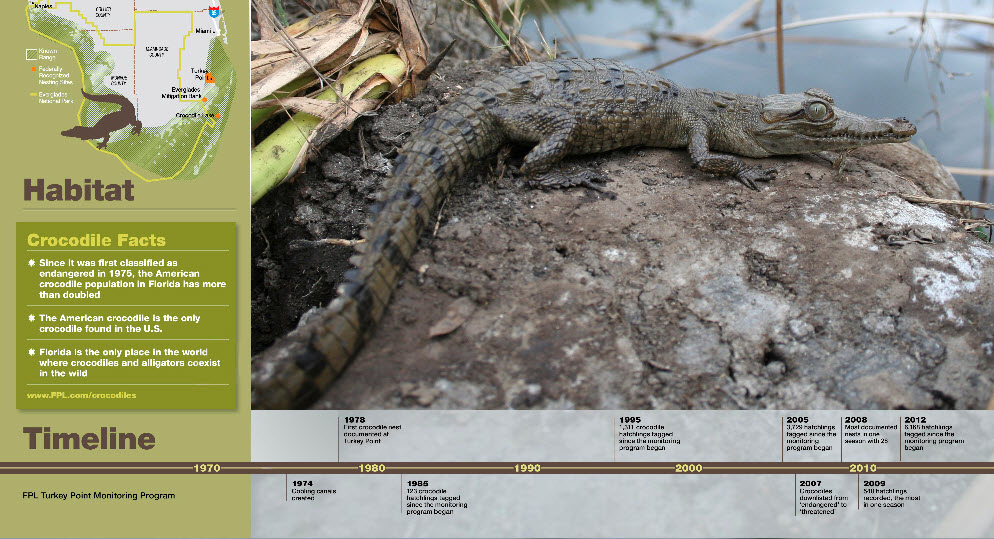A once endangered species continues a comeback
American crocodiles range in color from gray-yellow to brown, can grow up to 15 feet long and weigh as much as 2,000 pounds. They can be found in fresh or brackish water of river estuaries, coastal lagoons and mangrove swamps, where they feed on small mammals, birds, fish and crustaceans.
Crocodiles can be found throughout their range in southern Mexico, Central America, the Caribbean, and northern South America.
Throughout much of its range, the American crocodile is listed as threatened or endangered. FPL partners with federal and state conservation agencies to help with crocodile restoration efforts. At our Turkey Point Power Plant in southern Miami-Dade County, we have worked for years to help this species rebound from the brink of extinction. This work includes:
- Preserving and creating habitat for crocodile nesting and basking
- Conducting surveys to document population size, activity, growth and survival
- Constructing ponds to help provide sanctuary to hatchlings
- Relocating hatchlings to refuges to increase survival rates
In 2007, the United States Fish and Wildlife Service announced that the listing status of the American crocodile in Florida would be improved from endangered to threatened.
Breeding season
The American crocodile’s breeding season runs from mid-February through mid-April. Females can lay between 30 and 50 eggs, which they monitor during incubation. Like some other reptiles, the gender of hatchlings is determined by nesting temperature. Hatchlings emerge from their shells between July and August. The mother scoops hatchlings up in her mouth and carries them to the water. There is generally no additional parental care once the young crocs are transported to the water.
Resources
- Learn more about Wildlife and Habitat Preservation
- 'Going Dark' by James W. Hall - A Florida fiction novel
- Energy Education - FPL is committed to education, curriculum, grants and workshops
- World Wetlands Day is held annually on February 2 to celebrate how wetlands, help maintain biodiversity on Earth.
Events
Do you want our team in your next academic, environmental or community activity? Contact us via email with your name and information.

